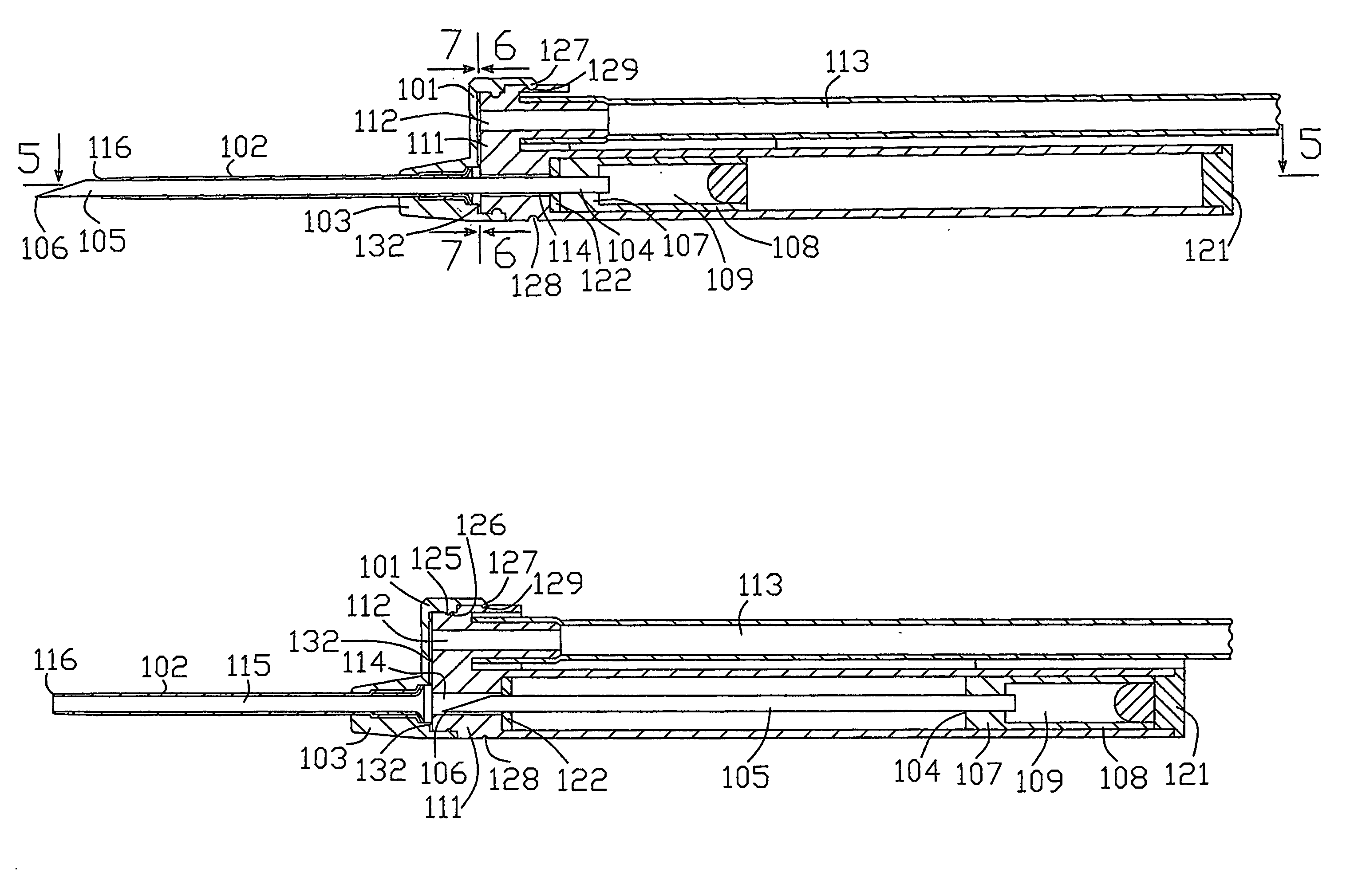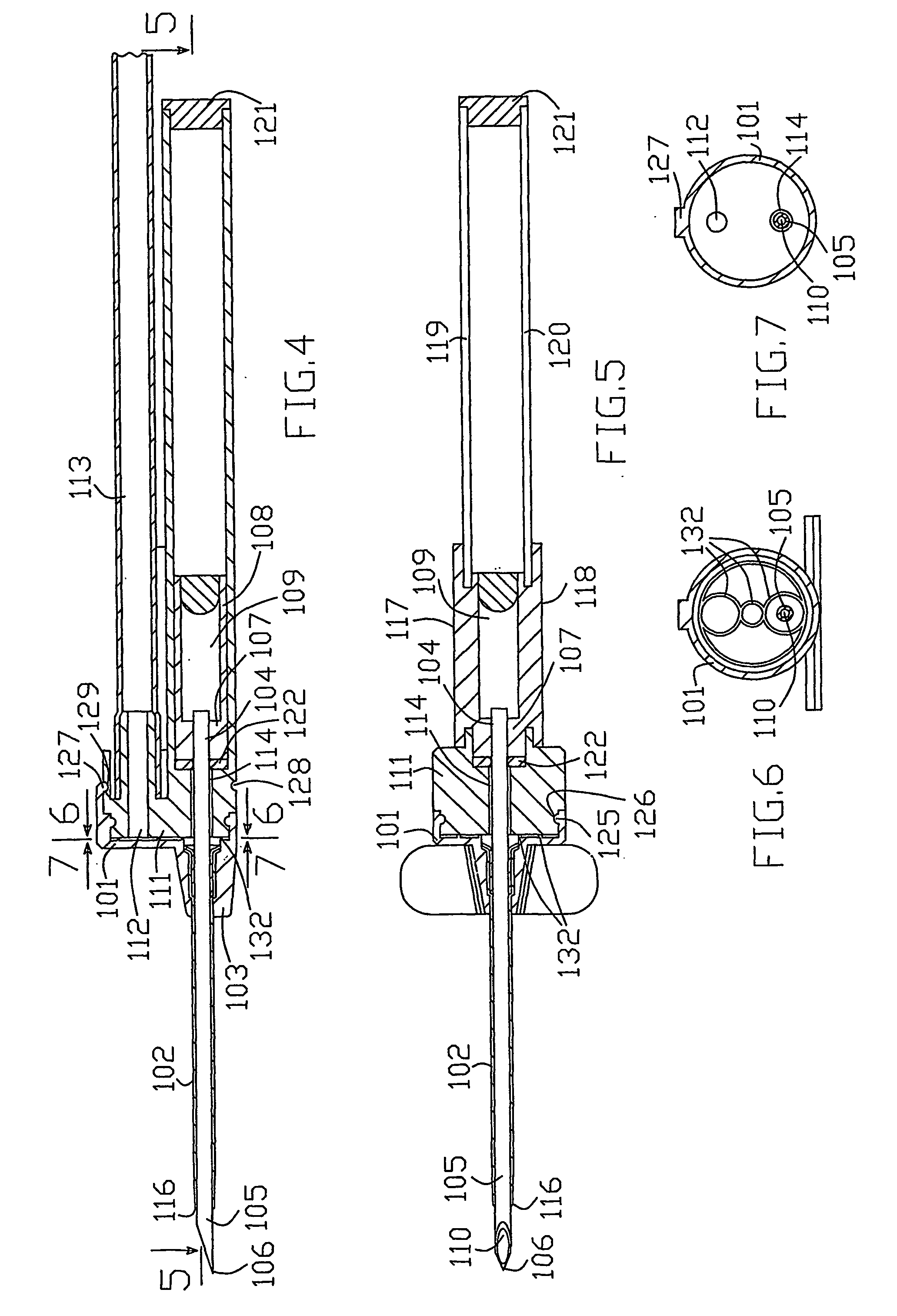Safety catheter device
a safety catheter and catheter technology, applied in the field of medical venipuncture devices, can solve the problems of increasing manufacturing costs, low blood flow speed, undesirable extension of the duration of hemodialysis or blood collection procedures, etc., and achieves the elimination of blood leakage, high reliability of device operation, and the effect of eliminating blood leakag
- Summary
- Abstract
- Description
- Claims
- Application Information
AI Technical Summary
Benefits of technology
Problems solved by technology
Method used
Image
Examples
Embodiment Construction
[0032] An explanation of the present invention is offered with the references made to the attached drawings.
[0033] The safety catheter device shown in FIGS. 1 to 9 is comprised of: catheter unit 101 including tubular catheter 102 and catheter hub 103; penetrating means 104 designed for the introduction of the tubular catheter into the patient's vein and including needle 105 with distal sharp end 106 and needle hub 107; the indication means 108 designed for the indication of getting needle distal sharp end 106 into the patient's vein and having an indication cavity in the form of flash chamber 109 attached to needle hub 107, and an indication channel 110 made as an internal channel of needle 105 for blood supply into flash chamber 109; a port unit 111 rotatably connected with catheter unit 101 and having blood stream port 112 for the communication of tubular catheter 102 with the external device (not shown) via tube 113, and needle-port 114 serving as a passageway for introducing ne...
PUM
 Login to View More
Login to View More Abstract
Description
Claims
Application Information
 Login to View More
Login to View More - R&D
- Intellectual Property
- Life Sciences
- Materials
- Tech Scout
- Unparalleled Data Quality
- Higher Quality Content
- 60% Fewer Hallucinations
Browse by: Latest US Patents, China's latest patents, Technical Efficacy Thesaurus, Application Domain, Technology Topic, Popular Technical Reports.
© 2025 PatSnap. All rights reserved.Legal|Privacy policy|Modern Slavery Act Transparency Statement|Sitemap|About US| Contact US: help@patsnap.com



